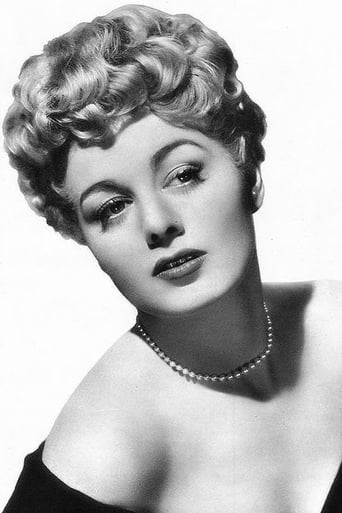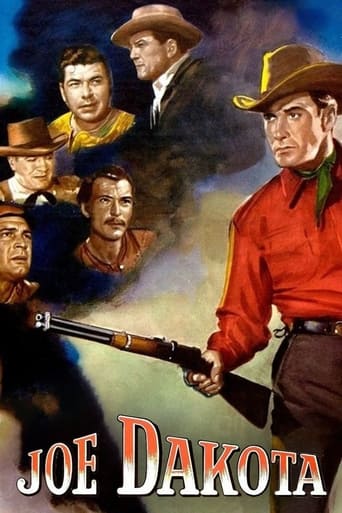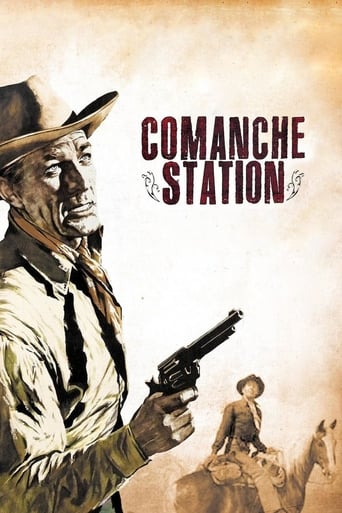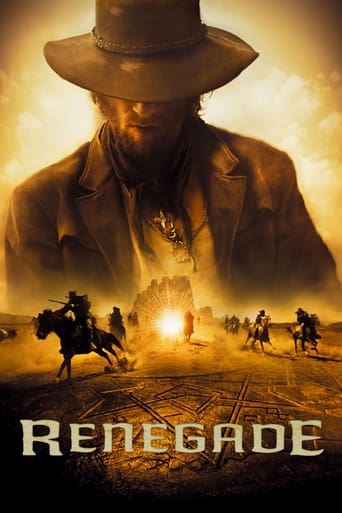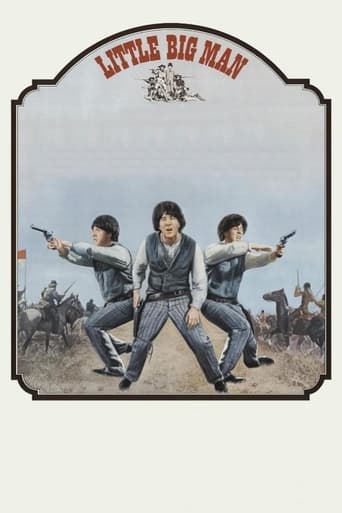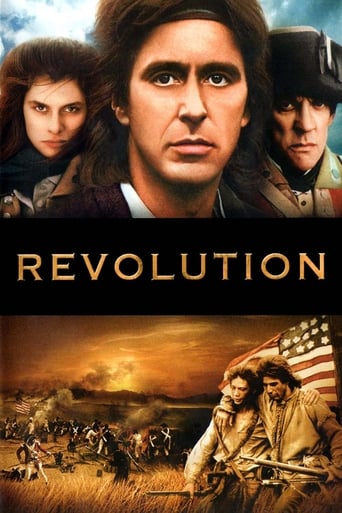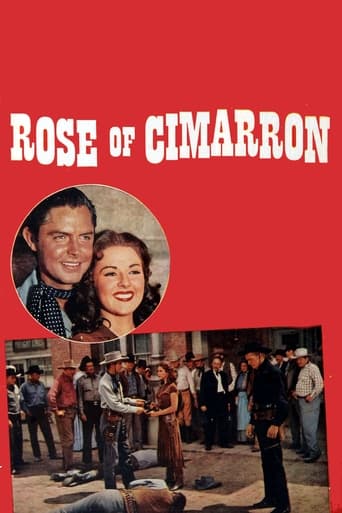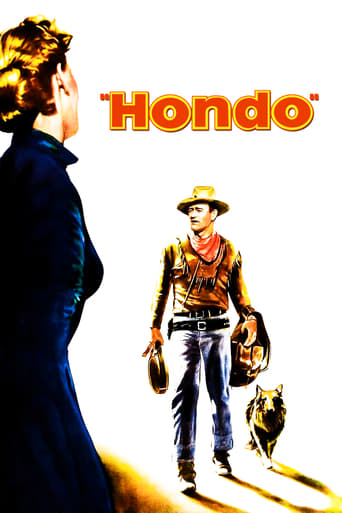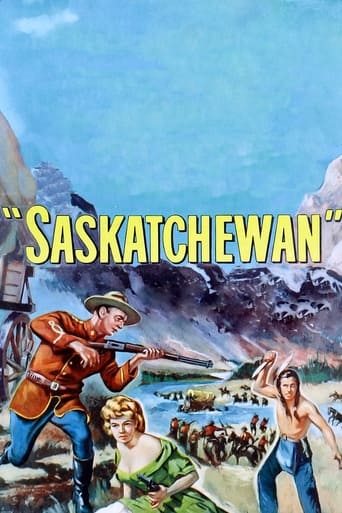
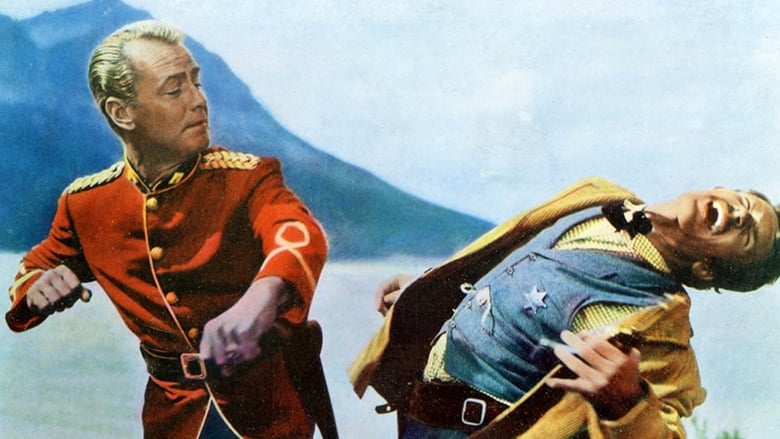
Saskatchewan (1954)
Story of blood brothers whose bonds are tested when marauding Sioux Indians cross the border to enlist the peaceful Cree in a battle against the Great White Father.
Watch Trailer
Cast


Similar titles
Reviews
It's simply great fun, a winsome film and an occasionally over-the-top luxury fantasy that never flags.
It's funny, it's tense, it features two great performances from two actors and the director expertly creates a web of odd tension where you actually don't know what is happening for the majority of the run time.
The movie's neither hopeful in contrived ways, nor hopeless in different contrived ways. Somehow it manages to be wonderful
The biggest problem with this movie is it’s a little better than you think it might be, which somehow makes it worse. As in, it takes itself a bit too seriously, which makes most of the movie feel kind of dull.
This is one of the spin off films inspired by the 'Custer's Last Stand' saga, that so traumatized the American psyche of the times.The saga of the actual Battle of the Little Bighorn has, of course, been played out on film as a drama or documentary a number of times.In fact, Raoul Walsh, who directed the present film, also directed the classic Errol Flynn-Olivia de Haviland-starring 'They Died with their Boots On' version of this battle. In fact, we might think of the present film as a long-delayed fictionalized sequel to that film, as it deals with the post-Little Bighorn Sioux movement into adjacent Canada and their interactions with the resident Cree. On the other hand, the plot much more resembles 2 other spin offs of the late '40s and early '50s I am familiar with:John ford's 'Fort Apache'and Anthony Mann's 'The Last Frontier'. These 2 films generally get higher ratings than the present film, although 'The Last Frontier' is probably no better known today. That film dealt with the US army's conflicts with the Sioux headed by Red Cloud in a slightly earlier era, just as the Civil War was drawing to a close, and is based on a historical conflict. In 'Forte Apache', the Sioux are replaced by the Apache. In all 3 films, at some point, there is a strong conflict between an 'injin'-savvy subordinate and the company commander who is either naive in dealing with 'injins' or feels duty-bound to deal with them as he believes his distant superiors wish. In the end, the rebel is vindicated. To one who has seen all 3 of these films, clearly 'Fort Apache' is the most entertaining, because of the charisma of the main adversaries(John Wayne and Henry Fonda) and the periodically interjected humor of some of the supporting actors. In contrast, the other 2 films lack any substantial humor to break up the drama, save for Victor Mature's taunting of Robert Preston, who has fallen into a bear trap pit. In 'The Last Frontier', Mature certainly provides a more animated charismatic rebel than the rather stiff monotonic Alan Ladd in the present film. This is the third film of this era I have seen , in which Shelly Winters is the lone white female among a horde of men traveling through a hostile 'injin'-infested West. Usually, she comes across as a hard-bitten floozy, sporting a low-cut dress, although she seems a tad more respectable in the present film.The gorgeous Canadian Rockies scenery is certainly one of the pluses for this film even though, geographically, it has no business being on the route from Saskatchewan to Great Falls, Montana.It was amusing seeing Alan Ladd in his cardinal red RCMP uniform sneaking up on the Cree encampment in broad daylight, in contrast to a much more appropriate drab buckskin outfit of his French Canadian scout. It was difficult for me to tell the Cree from the Sioux by their dress, horse riding and lodges. The Cree were a very diverse and widespread group. The Plains Cree, by necessity, adopted much the same lifestyle as the Plains Sioux, riding horses and living in bison-derived tepees, as opposed to the Woodland Cree, who made wigwams and canoes out of birch bark. By staging most of this film in the Rockies, both the horsemen and canoeing aspects of Cree transport were included. Jay Silverheels, who achieved fame as The Lone Ranger's constant companion in the TV series, again serves as a sometimes companion and confident to the hero. Hugh O'Brian plays a very conflicted character: a US marshal out to capture Shelly's character for the supposed murder of her brother, but who also has the hots for Shelly, to his ultimate demise.
I've watched the movie several times and thought it was entertaining. in 1954 movies were entertainment, i don't know of any movie let alone one from 1954 that is historically correct. westerns among other movies in this period were horrible when it came to correctness. but they are amusing to watch and i found this one entertaining. i don't know whats correct or not in the movie but i've watched it several times. if there are no mountains in Saskatchewan who cares at least the movie has them and in vista vision. Alan Ladd does a good job and so does Shelly Winters, now there was a lot of people i didn't know who could use some acting skills but the movie turned out alright.
In 1955 (almost sure) I was stuck with my parents in a line of more than one hour to see this film. Later, when we left the theater we were all satisfied. We had seen a beautiful scenery, Mounties and Indians, on rivers and mountains, plus an entertaining film. Seeing this film yesterday I was happy to realize that after so many years my opinion about it is just the same. Raoul Walsh has to his credit great classic westerns like "Colorado Territory", "Pursued" and "They Died With Their Boots On". "Saskatchewan" is not on their level but is better than many other westerns directed by Walsh. My impression is that the film was shot mostly in Lake Louise and the mountains surrounding it. The scenery is breathtaking and considering Walsh's expertise on grandiose scenes combining the outdoors with hundreds of people on horses you can be sure you are seeing something unique. Ladd is O'Rourke a man that was raised among the Cree and later became a Mountie. Shelley Winters, in one of her best roles is a woman pursued by the law. The Sioux, after Little Big Horn flee to Canada and try to make the Cree join them. Ladd, who knows the Cree better than his superior, does not agree with him, and is on a way to a court martial. The only way he can redeem himself is by proving that his decision was correct. Fom reading other comments I gathered many people were shocked by this film not being accurate neither by the locations where it was filmed, nor by the story. I can understand their point of view, but I still think it is a good film.
This movie was filmed in Banff National Park not far from the headwaters of the Saskatchewan River. Locations such as Bow Lake and Peyto Lake are on the Icefield Parkway Hwy 93 North of Lake Louise. The movie showed the Sioux a little farther west and north of where they retreated after the Custer Massacre as they only (most of them) only made it to the Cypress Hills in Southeast Alberta. Actual number of "mounties" involved in bringing them back to the border?? Three!! The Canadian and American governments had agreed no harm would come to the Sioux or Sitting Bull but of course this promise was not kept and Superintendant Walsh of the R. C. M. P. (Then Northwest Mounted Police orN.W.M.P) resigned over the betrayal of the Sioux.



